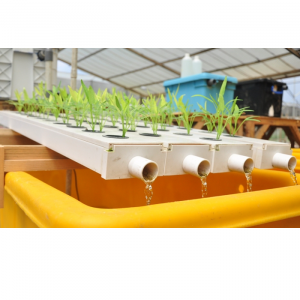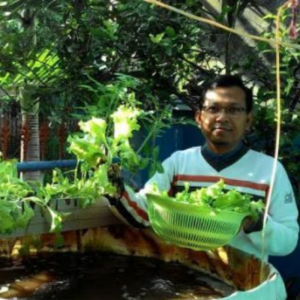
Auburn University Researcher Developing Management Practices for Problem Algal Blooms in Aquaculture
| Wed, 30 Jun 2021 - 09:23
Aquaculture is the fastest-growing sector of animal agriculture; however, sustainable expansion and intensification of aquaculture is severely hampered by issues related to aquatic animal health.
A researcher in Auburn University’s School of Fisheries, Aquaculture and Aquatic Sciences is focused on developing programs to help the aquaculture industry better manage problematic algae growth in ponds and other water sources.
Alan Wilson, professor and assistant director for instruction in his school, is partnering with the Aquatic Animal Research Unit of the U.S. Department of Agriculture-Agricultural Research Service, or USDA-ARS, to conduct research involving catfish growers in west Alabama.
“We are currently focused on projects involving 21 ponds across five catfish farms,” Wilson said. “We are monitoring algal growth and gathering environmental data to help those growers establish best management practices for water quality.”
Read more: Solutins to Control Blue-Green Algae in Grow-out Ponds
Wilson says algal blooms can be a normal occurrence in ponds with elevated nutrients, but there is an urgent need to manage water quality in aquaculture ponds that favors beneficial algal communities versus those that can be harmful to the fish.
“A ‘green pond’ can be a good thing in the healthy context,” Wilson said. “Algae are important, as they produce oxygen. But blooms can also become too abundant with harmful types of algae, creating conditions that kill the fish. This is what our control focus is on.
“We are developing new detection, prevention and control measures for harmful algae to reduce fish/shellfish mortality, safeguard animal performance and ensure product quality.”
Harmful algal blooms are occurring with increased regularity and severity in freshwater, estuarine and marine systems around the world, according to Wilson. These harmful algal blooms have brought about large-scale catastrophic losses of valuable catfish and shrimp, particularly in the summer months immediately prior to harvest.
In Alabama alone, since 2015, mortality levels attributed to harmful algal blooms have surged to nearly 1 million pounds of catfish annually, according to Wilson’s USDA-ARS collaborator Benjamin Beck.
Read more: Application of Micro Bubbles Technology in Catfish Rearing
Moreover, harmful algal blooms are thought to exert profound chronic effects, such as causing the fish to have less-than-normal feeding rates, thereby increasing the time to harvest, along with stress and immunosuppression that can potentially predispose fish to parasitic and bacterial disease.
Wilson conducts his research through his lab at Auburn, which includes a team of four graduate students, five undergraduate students, one high school student and one technician, in collaboration with scientists located at federal and state agencies, nonprofit environmental groups and universities around the world.
“We are starting our second year of this five-year project,” Wilson said. “We collect monthly water samples from each pond that allow us to monitor changes in water conditions with the objective of developing management tools to assist those aquaculture growers in managing their ponds more effectively and efficiently.”
While Wilson’s current USDA-ARS-funded project focuses largely on catfish growers, his lab is broadly interested in understanding the ecology of freshwater lakes, ponds and reservoirs.
“We study the abiotic and biotic mechanisms mediating the promotion or control of freshwater harmful algal blooms and taste-and-odor events in aquaculture ponds, recreational reservoirs and drinking water reservoirs,” Wilson said.
Wilson routinely helps homeowners understand factors associated with harmful algal blooms in their private ponds. He also conducts water quality analyses to determine the threat that algal toxins pose to a variety of aquatic food webs, livestock and zoo animals.
(Written by Mitch Emmons)
Source: Auburn University






















